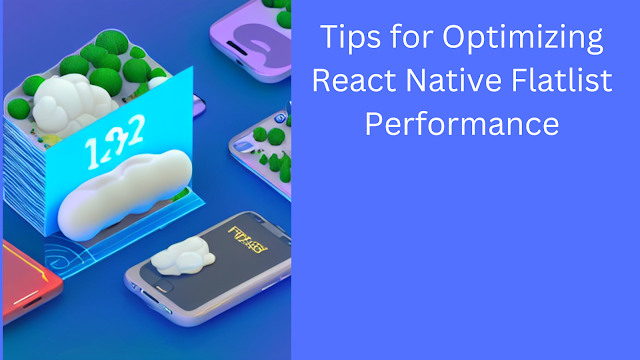Tips for Optimizing React Native Flatlist Performance
Tips for Optimizing React Native Flatlist Performance
There are a few ways to optimise the performance of a FlatList in React Native:
- Utilize the prop initialNumToRender: You can set the number of items that should be displayed when the list loads for the first time with this prop. The list's initial load time can be speed up by setting this to a lower value.
- Make use of the prop onEndReachedThreshold: The distance at which the onEndReached callback will be triggered can be specified using this prop. You can improve performance and reduce the number of times the callback is called by setting this to a larger value.
- Utilize the prop keyExtractor: You can specify a unique keyExtractor for each item in the list with this prop. When items are added, removed, or rearranged, React can update the list more quickly by providing a keyExtractor.
- Make use of the prop removeClippedSubviews: If this prop is set to true, it will only render the items that are currently visible on the screen, which can improve performance.
- Make use of the prop windowSize: You can specify the number of items that should be rendered outside of the list's visible area using the windowSize prop. While increasing this value will increase the list's memory consumption, it will improve overall scrolling performance.
- Use PureComponent or shouldComponentUpdate lifecycle method: To avoid having to re-render a complex component within a FlatList, you can use the PureComponent or shouldComponentUpdate method in class component.
- Data pre-fetching: Pre-fetching data is a way to get data before you need it. This way, when you need to show the data, you don't have to wait for the network request to finish.
- Virtualisation: By rendering only the items that are currently visible on the screen, utilizing virtualization on the items that are contained within the FlatList can help to improve performance and reduce memory usage. Note that you should use these optimization techniques in combination and test the performance of your app after each change to see which combination of techniques works best for your specific use case.



Comments
Post a Comment